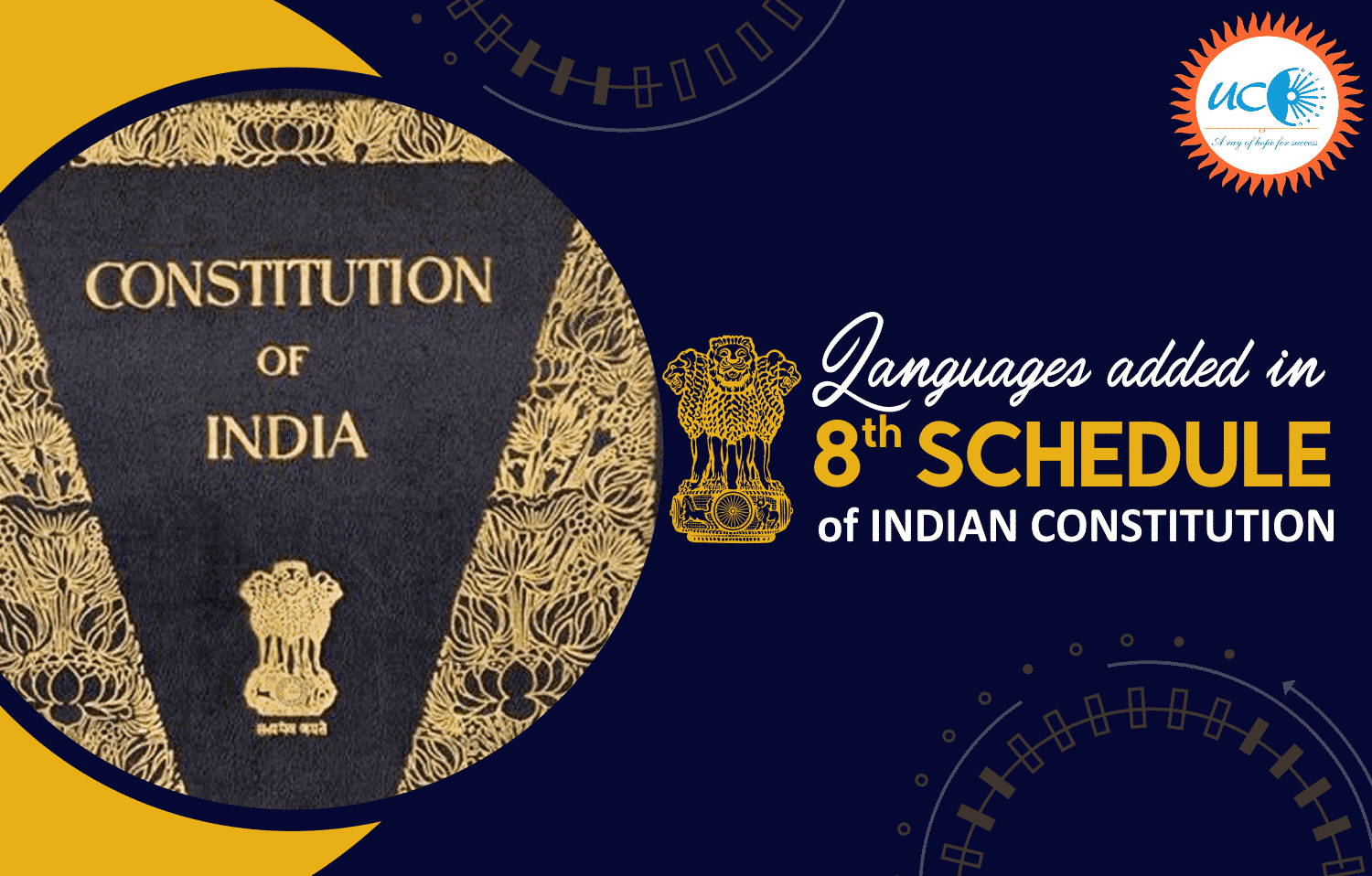Languages added in the 8th schedule of Indian Constitution
Languages added in the 8th schedule of Indian Constitution
The Eighth Schedule of the Constitution of India lists the 14 official languages of the Republic of India and other 8 languages are added by amendments as follows;
The Constitutional provisions relating to the 8th Schedule occur in article 344(1) and 351 of the Constitution.
The 8th Schedule to the constitution consists of the following 22 languages:
Initial 14 languages:
1) Assamese 2) Bengali 3) Gujarati 4) Hindi 5) Kannada 6) Kashmiri, 7) Malayalam 8) Marathi 9) Oriya 10) Punjabi 11) Sanskrit 12) Tamil 13) Telugu and 14) Urdu
Later on, added Languages by amendments:
1) Manipuri 2) Nepali 3) Sindhi 4) Konkani 5) Bodo 6) Santhali 7) Maithili and 8) Dogri.
The Constitution Act (21st Amendment Act, 1967) –during Mrs. Indira Gandhi Period (10-04-1967): Includes ‘Sindhi’ in the list of languages in the Eighth Schedule.
Sindhi:
It is an Indo Aryan Language of the historical Sindh region spoken by the Sindhi people. Sindhi is not an official language of any of the states in India. It is an optional third language in the Indian states of Rajasthan, Gujarat and Madhya Pradesh. It is the official language of the Pakistani province of Sindh.
The Constitution Act (71st Amendment Act, 1992) – during Shri Narasimha Rao period (31-08-1992): Inserting entries 7, 9, 11 and reinserting some entries in the 8th Schedule.
Konkani:
It is an official language of the Indian State of Goa. It is a minority language in Karnataka, Maharashtra, Kerala, Dadra & Nagar Haveli and Daman & Diu. It belongs to the Indo Aryan language branch. The word Konkani comes from the Kukkana tribe, who were the original inhabitants of the land where Konkani originated.
Manipuri:
Meiteilon also called Meitei (Meetei) is a Sino-Tibetan language and the predominant language and lingua franca of Manipur North-eastern state of India. It is one of the official languages of the Government of India and is one of the most spoken languages in north-east India after Bengali and Assamese.
Nepali:
It is the official language of Nepal. It is also spoken in India, Bhutan and parts of Burma. It is an official language in the Indian States of Sikkim and West Bengal. This language is also known as Gorkhali Language or Khaskura. It is written in the Devanagari style of writing.
The Constitution Act (92nd Amendment Act, 2003) – during Shri Atal Bihari Vajapeyi period (7-1-2004): Addition to “Bodo”, “Dogri”, “Maithili” and “Santhali” languages in the 8th Schedule.
Bodo:
It is the Sino-Tibetan the language, spoken primarily by the Bodo people of Northeast India, Nepal and Bengal. It is the official language of the Bodoland Autonomous region and a co-official language of the state of Assam in India. It was formerly written using the Latin and Assamese script. Since 1963, this language has been written in the Devanagari script.
Dogri:
It is an Indo Aryan language, spoken mainly in the Jammu region of Jammu & Kashmir and Himachal Pradesh. Also in northern Punjab, other parts of Jammu & Kashmir. Dogri speakers are called Dogras and Dogri-speaking region is called Duggar. It is now considered to be a member of the Western Pahari group of languages.
Maithili:
It is an Indo-Aryan language, spoken mainly in Indian states of Bihar, Jharkhand and in Nepal. Tirhuta was the primary script written for Maithili. Today it is written in the Devanagari script.
Santhali:
It is the most widely spoken language of the Munda subfamily of the Austroasiatic languages. It is spoken mainly in the Indian states of Assam, Bihar, Jharkhand, Mizoram, Odisha, Tripura and West Bengal.







